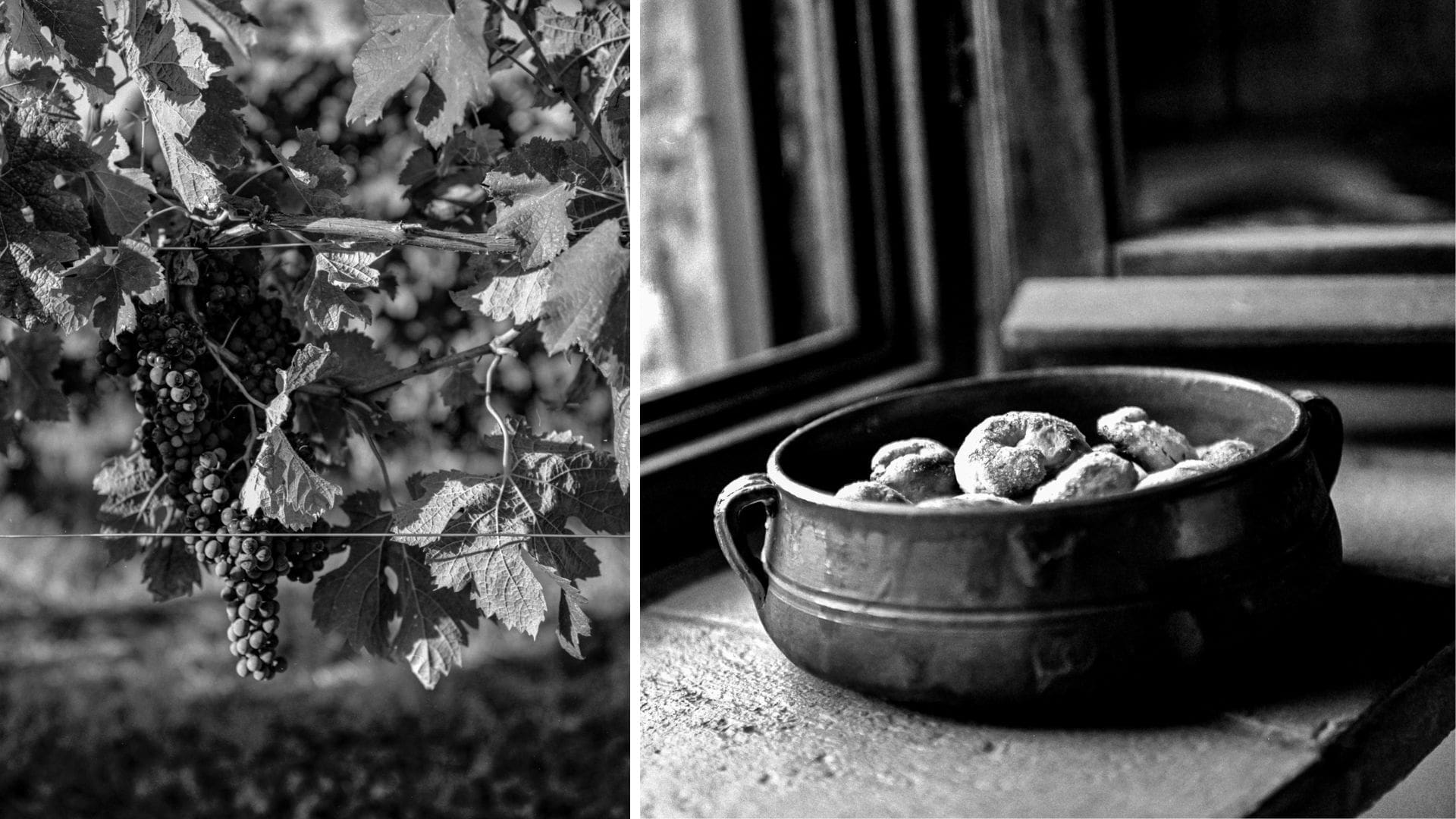Food can do so many things, but one thing I adore the most about a good recipe is the memories it invokes. These donut-shaped cookies—Ciambelline al Vino—are no ordinary treats. I first learned how to make them in Civita di Bagnoregio, Italy, a stunning Etruscan hilltop town nestled in the heart of farm country, a couple of hours north of Rome. It was a place out of a dream—terracotta roofs, sleepy cobblestone streets, and ancient chestnut groves and valleys as far as the eye could see. I was there on a fellowship for the Civita Institute, interviewing local farmers about their culinary traditions. And that’s when I met the beautiful nonnas (grandmothers) of the town.

The Nonnas of Civita
The three of them, goddesses of Italian cooking, welcomed me with the warmth of someone who’s known you their whole life. Amid laughter and spirited debate, they shared their stories of local food traditions with me in the tiny town piazza on a hot summer day in 2021. They reminisced about the way food was carried up the steep walking paths from the Calanchi Valley below and showed me artifacts from centuries past—a wooden straining spoon, scarred and polished from 150 years of pasta straining, a relic as much as it was a tool.
When the conversation turned to Ciambelline, their faces lit up. For them, these cookies were more than a dessert—they were tradition and celebration, brought out only for holidays and special occasions. Later that evening, long after the interview was finished, I found myself invited into another neighbor’s home for a nightcap and horribly translated banter on where to see incredible gardens and other sites in the region.

My bond with these simple yet sacred cookies began on a cozy new moon night under a blanket of stars. And now, every time I make them, those treasured memories roll in like waves. That’s the beauty of recipes—they’re passports to the past, carriers of culture, and tokens of love and delight.
This recipe is both forgiving and easy to make your own. It uses wine not just as an ingredient but as an invitation. Wine carries the heart of this recipe, and local is always best. Now that I am back in the Northwest, I chose a couple from Remy Wines in Oregon’s Willamette Valley for their old-world charm and Italian grape varieties. Their 2021 Gold Star “Super Tuscan” (an earthy blend with hints of fennel pollen and chocolate) and their 2023 Arneis Aurora Vineyard White (a crisp, bright white that finishes like apples and citrus) make these cookies come alive. They’re proof that, like Civita’s olives and grapes, the Pacific Northwest has treasures of its own.

Measuring the “Old World” Way
The beauty of Ciambelline lies in its adaptability. If you are familiar with any Italian recipe, you might have noticed that instead of using a “cup,” they would say “glass.” The “glass” cup measurement speaks to a simpler time when every kitchen used its own unique tools—juice glasses and vintage tumblers. It’s a testament to intuition in cooking, where feel and instinct often trump precision. When paired with local or nostalgic ingredients like the wines from Remy, these cookies bridge continents and memories.
Buon Natale! A sweet holiday to you and yours.
Ciambelline al Vino
Makes 40-50 cookies
Ingredients
White Wine Cookies
- 1 (glass) cup of 2023 Arneis Aurora Vineyard White
- 1 (glass) cup sugar
- 1 (glass) cup Tuscan olive oil
- 1 1/2 tsp salt
- Lemon zest, orange zest, and saffron
- 3 to 4 cups 00 flour (or more, as needed)
- Demerara and white sugar for rolling
Red Wine Cookies
- 1 (glass) cup of 2021 Gold Star “Super Tuscan” from Remy Drabkin Red
- 1 (glass) cup sugar
- 1 (glass) cup Tuscan olive oil
- 1 1/2 tsp salt
- 1–2 tablespoons fennel pollen
- 1–2 tablespoons fennel or anise seed
- 3 to 4 cups 00 flour (or more, as needed)
- Fennel pollen, Demerara, and white sugar for rolling

Instructions
Preheat Your Oven: Heat your oven to 350°F and line a sheet pan with parchment paper.
Make the Dough: Combine the wine, sugar, herbs, spices, zest and olive oil in a large bowl, mixing until incorporated. Slowly add the flour, one cup at a time, until a glossy dough forms. The dough should have a playdough-like texture—soft but holding its shape.
Shape the Cookies: Roll small portions of dough into finger-sized cylinders, then twist them into small rings, pressing the edges gently together to seal the shape. To stay consistent, I like to wrap the dough around my finger before sealing.
Coat in Sugar: Dip each ring into the Demerara and white sugar, giving them a nice, sugary crust. Place them carefully onto your prepared baking sheet with parchment paper.
Bake: Bake the cookies for 18-25 minutes, keeping a close eye toward the end. While you don’t want them to burn, those golden-toasty bottoms bring a delightful crunch.
Cool and Enjoy: Allow the cookies to cool on the tray before transferring them to a plate.

Serving Suggestions
Ciambelline cookies are perfect for dipping. Pair them with a glass of wine or serve them beside a warm cup of coffee. Their delicate texture and aromatic layers come alive in every bite.








